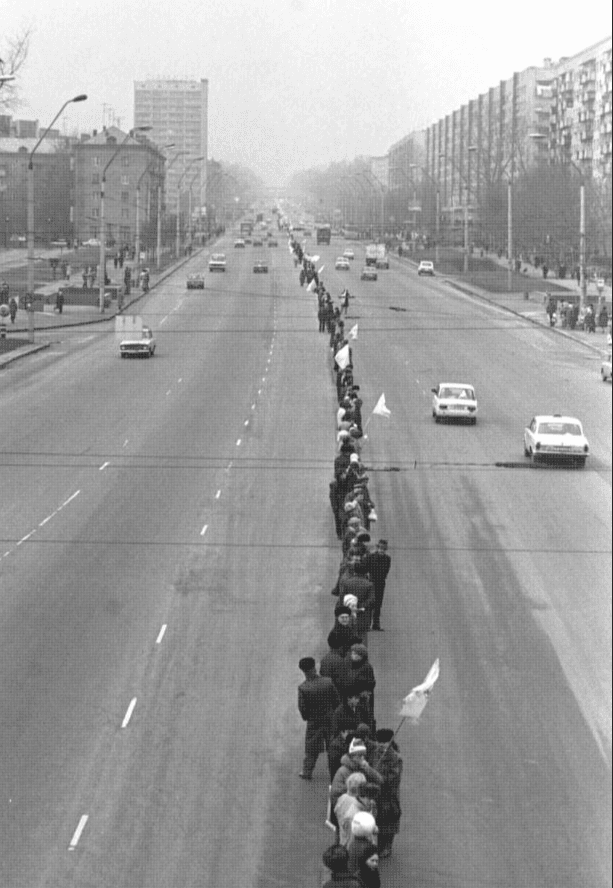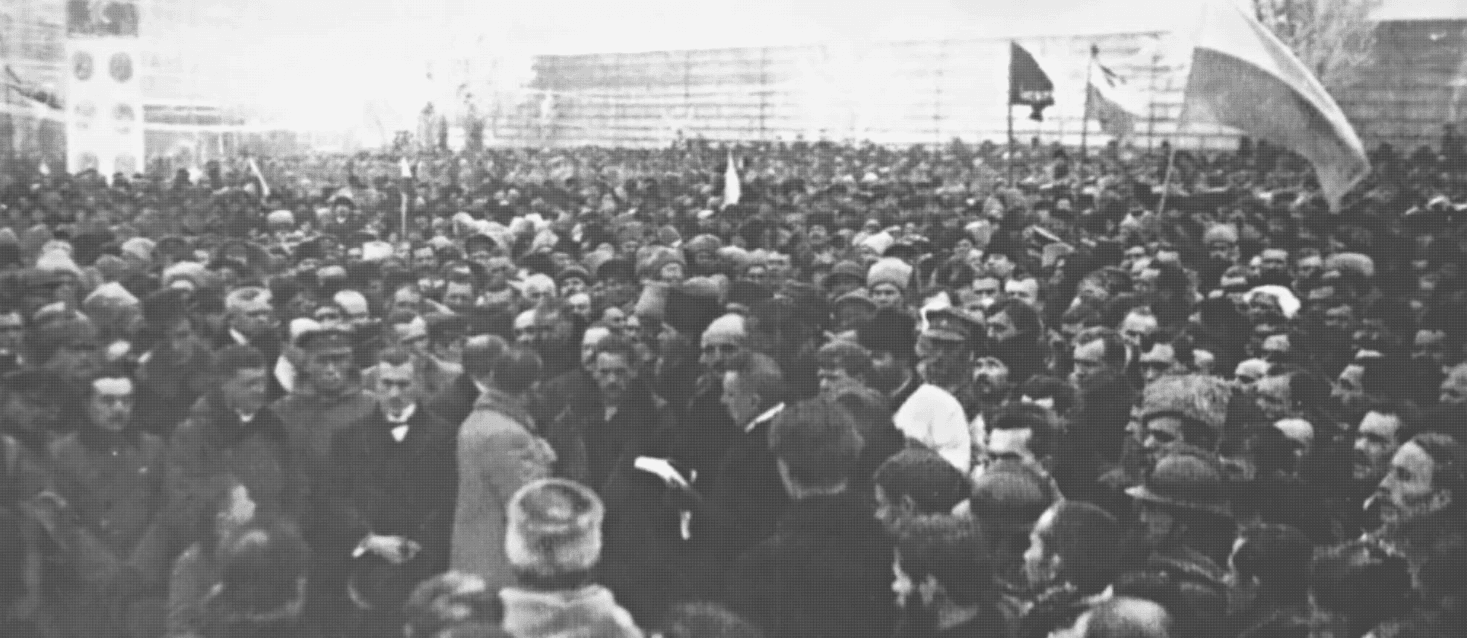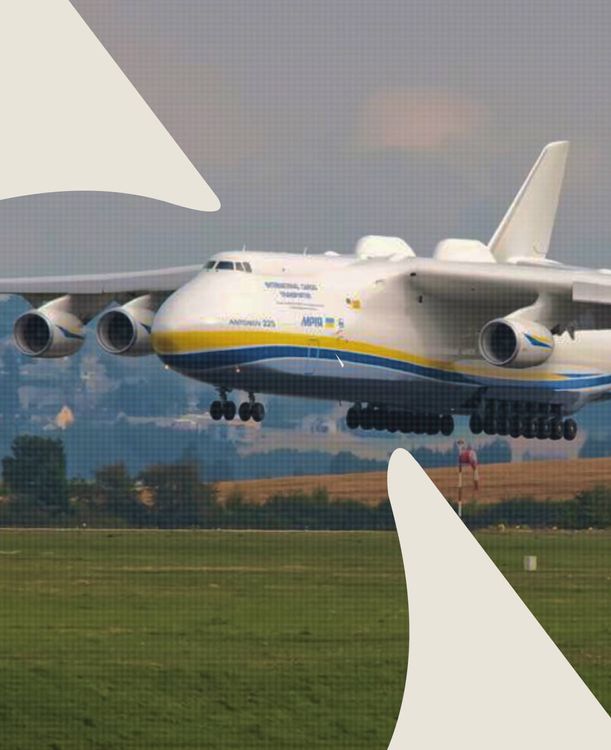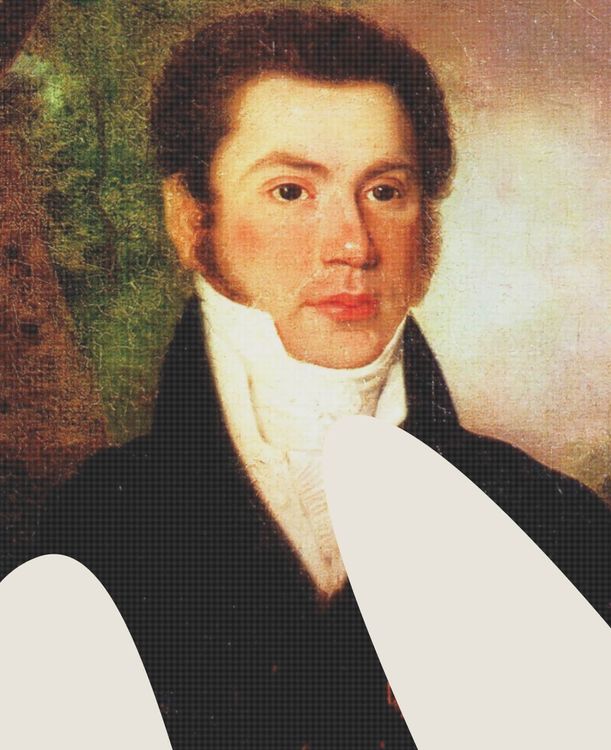Zhyvyi lantsiuh (Human chain for the 71st anniversary of the Act Zluky)

One of the largest mass actions in human history, stretching over more than 700 kilometers, where Ukrainians demonstrated their spirit of freedom in the fight for independence.
1990
Fonts:
KREIS
Designer:
“It was winter, and the weather was frosty, bitingly cold. The huge snow-covered Sofia Square was flooded with masses of people,” this is how Lonhyn Tsehelskyi described the day of the proclamation of the Act of Unification of the Ukrainian People's Republic (UPR) and the Western Ukrainian People's Republic (WUPR).
That day, Ukrainian flags could be seen on all buildings of the capital, and the balconies boasted hung out carpets and canvases with national patterns. It was on January 22, 1919 that Ukrainian lands were united into a single state for the first time in many centuries; however, the awareness of this event’s significance for the Ukrainian people dawned later on.
For the 71st anniversary of the unification of the UPR and the WUPR, people formed a “human chain,” one of the largest mass actions that symbolized the restoration of the Ukrainian state.
The 1919 Act Zluky (Unification Act) did not happen by chance: a year before, on January 22, 1918, a Universal was adopted declaring full independence of the Ukrainian People’s Republic from Russia. At the time, it was an important event since the Ukrainians had joined hands to defend their own state. This fact also indicates that a hundred years ago they considered themselves one people, despite the formal affiliation to different empires: the WUPR to the Austro-Hungarian Empire, and the UPR to the Russian one.
Historians call the unification of the two republics a model of civilized democratic merger of territories into a single sovereign state.

Aware of this event’s significance, although a few decades later, Ukrainians held the Ukrainian Wave mass action, also known as the “human chain.”
It took place on the eve of the 71st anniversary of the Act Zluky, namely on January 21, 1990. Millions of citizens joined hands, forming a continuous chain through roads and highways that connected Ivano-Frankivsk and Kyiv. People brought along homemade posters, armbands and flags.

The chain stretched for more than 700 kilometers and came to symbolize the unity of the eastern and western parts of Ukraine. According to official data, about 450 thousand people participated in the action, but unofficial data says the number was from one to five million.
Officially, the human chain was known to run “from Lviv to Kyiv,” but in reality, the starting point was the town of Stryi in Lviv region. Two more “chains” stretched from there, one to Ivano-Frankivsk and another to Transcarpathia. The density varied. In central Lviv, people stood in several rows, whereas, in some areas of Kyiv region and Zhytomyr region, there were intervals of tens of meters.
The organizers of the Ukrainian Wave were the newly created People’s Movement of Ukraine – the Rukh; its leader was Ivan Drach, and the executive head was the former political prisoner Mykhailo Horyn. In his diary, Ivan Drach would later write down, “The idea belonged to the dissident Valentyn Moroz, the name was proposed by Oles Honchar, the most fervent promoter was Dmytro Pavlychko, and the organizer was the head of the Movement’s Secretariat, Mykhailo Horyn.”

It is almost hard to believe that a mass action like that took place in Soviet Ukraine, but the spirit of independence and freedom was abundant then. The human chain became one of the things that made it evident that the Ukrainian nation had overcome the fear of the communist regime and was ready to demonstrate its disagreement with the policy of that time.
Like a hundred years ago, Ukraine now has to defend the unity of its lands yet again.
But the constant resistance of the Ukrainian people proves them a single indivisible state that always fights for its right to independence and wins it.
Fonts:
KREIS
Details:
Zhyvyi lantsiuh (Human chain for the 71st anniversary of the Act Zluky)
Designer:
About font:
Next letter and event

Zhyvyi lantsiuh (Human chain for the 71st anniversary of the Act Zluky)
this project
in social
“Shchedryk” (The Little Swallow)

Antonov AN-225 Mriya ("The Dream")

Volia — collective concept, most often translated as Freedom

Orlyk’s Constitution

“Yoi, nai bude!” (Ah, let it be!)


Falz-Fein and his “Askania Nova”

Holodomor


Aeneid by Ivan Kotliarevsky

Yrii (/'irij/: iriy), yndyk (/in'dik/: turkey) and yrod (/'irod/: Herod)

“Yak umru to pokhovaite...” (When I am dead, bury me...)

Zaporizka Sich (The Zaporizhian Host)

“Yak umru to pokhovaite...” (When I am dead, bury me...)


Zhyvyi lantsiuh (Human chain for the 71st anniversary of the Act Zluky)

Holodomor

Peresopnytske Yevanheliie (The Peresopnytsia Gospel)

Creative & Tech Online Institute
Медіа про дизайн, креатив і тех індустрії

Ukrainski sichovi striltsi (The Ukrainian Sich Riflemen, or the USS)


Shliakh iz variah u hreky (Route from the Varangians to the Greeks)


Danylo Halytskyi

Peresopnytske Yevanheliie (The Peresopnytsia Gospel)

Antonov AN-225 Mriya ("The Dream")

Holodomor

Chornobyl Disaster

Yuzivka


Falz-Fein and his “Askania Nova”

“Yak umru to pokhovaite...” (When I am dead, bury me...)

Peresopnytske Yevanheliie (The Peresopnytsia Gospel)

“Yak umru to pokhovaite...” (When I am dead, bury me...)

Zaporizka Sich (The Zaporizhian Host)

“Plyve kacha po Tysyni...” (“Swims the duckling, on the Tysa...”)


Falz-Fein and his “Askania Nova”


